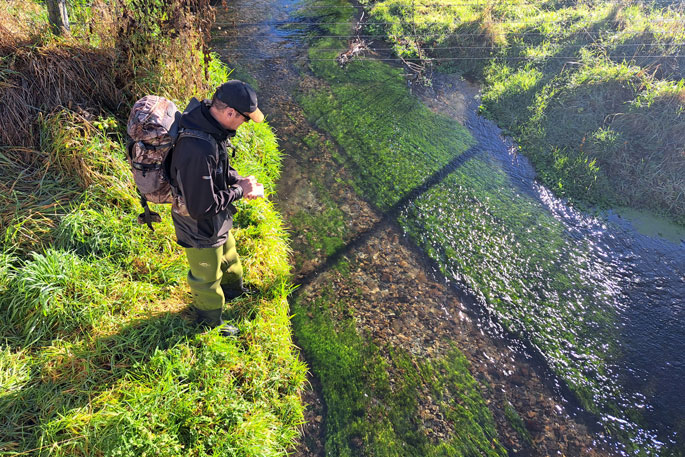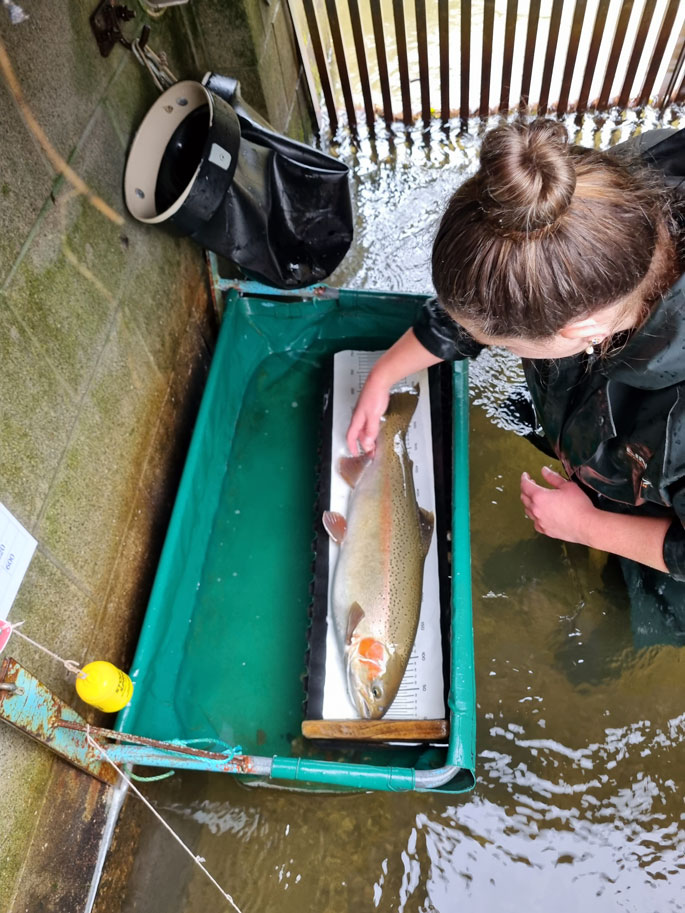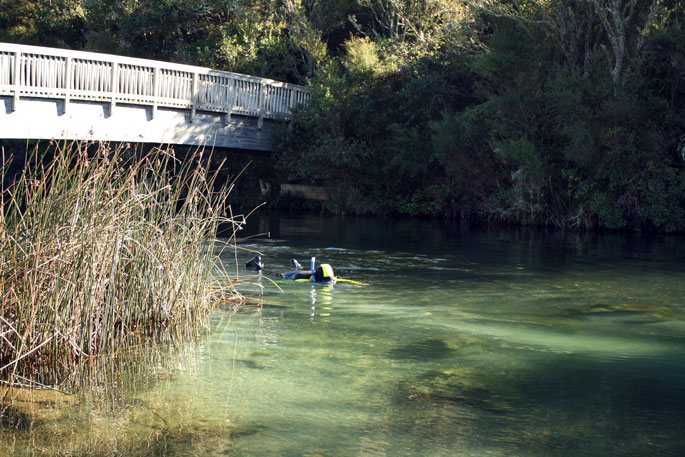Fish & Game staff throughout the country are busy conducting spawning surveys for trout and salmon to ensure there are sustainable fisheries for the future and to check up on stream and river health.
Fish & Game New Zealand chief executive Corina Jordan says there are a range of ways to monitor spawning, from using fish traps to walking up a stream and counting.
“Fish spawning monitoring tells us if a population is in trouble, if sites have moved and need protecting, and help us with planning work.”
Spawning is when a female fish ‘digs’ holes in stream gravels by turning on their side and thrusting their tail. They lay eggs in the hole, and the male fish deposits milt onto the eggs to fertilise them.
The female then ‘digs’ a new hole in front of the eggs, which covers the eggs in gravel. The excavations are called redds, which simply means nest.
“Salmon and different species of trout spawn at different times, but often in the same waterways. There are also differences depending on where you are in the country, but generally, salmon spawn from March to June, brown trout from May and rainbow trout from June onwards.
“So, while this work is continuing, we are already getting interesting findings. Our Nelson Marlborough team recently monitored brown trout redd density for a section of Motupiko River. Based on the survey, which found an uptick in spawning activity, they are making recommendations to avoid any instream works activity upstream of the main spawning zone from May to October (as designated within the Motueka Water Conservation Order).
“We are also keeping an eye on salmon migrating from the sea to the headwaters of the main central South Island rivers to spawn as there’s been a decline in recent years."
Corina says spawning surveys were just one part of the work Fish & Game does to monitor and manage species and the work also allows the organisation to keep a close eye on the health of our precious waterways.
“Fishing and hunting are ways of being part of nature and its cycle. So, part of our focus is ensuring our wild places stay wild. And more than that, we must ensure that the life that survives there thrives there.
Regional updates:
Auckland-Waikato
Auckland/Waikato staff conduct spawning surveys to ensure there is adequate habitat for fish to spawn. If Hydro Lakes have no natural spawning or limited spawning, survival and hatchery releases are necessary to maintain the fishery. The spawning survey will be followed up with electrofishing in the spring to confirm juvenile survival.
Eastern
Eastern Region conduct a number of spawning surveys around the Rotorua lakes.
A fish trap in the Ngongotaha stream monitors numbers and sizes of brown and rainbow trout throughout the year – except when high rainfall prevents it from operating. Brown trout brood fish are also collected for use at the hatchery.
Lake Tarawera’s spawning tributary streams are also monitored. Tarawera is an important fishery in the Eastern Region with the lake providing rainbow trout brood fish to run the hatchery. The Te Wairoa stream is trapped daily between the beginning of April and the end of August. Walk-up spawning counts are also conducted in other key Tarawera streams and drift dives of the lake’s outlet are carried out four times over winter.
Intensive anger creel surveys and walk-up spawning trout counts are also undertaken with Lake Waikaremoana and its tributaries on a 3-yearly basis. Trout are a key indicator species for ecosystem health and fluctuations in trout numbers or fish size may be indicative of changes occurring in the catchment.


 A rainbow trout from the Eastern region being measured.
A rainbow trout from the Eastern region being measured. A Fish & Game officer inspecting a river.
A Fish & Game officer inspecting a river.
0 comments
Leave a Comment
You must be logged in to make a comment.